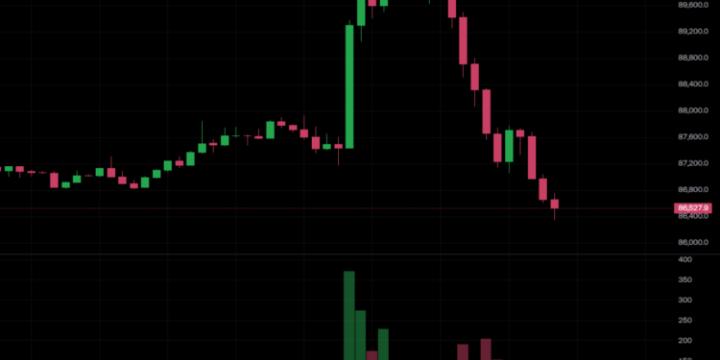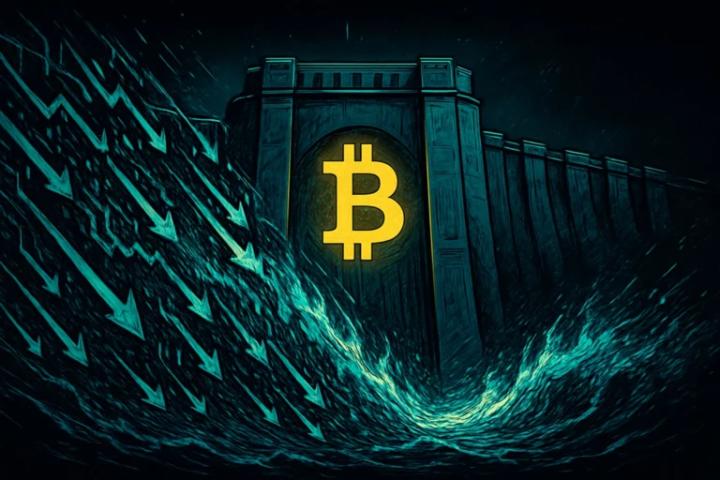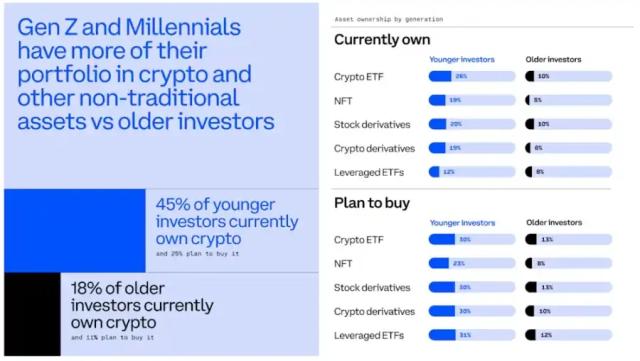Stablecoins are following a similar historical trajectory to banking.
Original text: A useful framework for understanding stablecoins: Banking history (a16z crypto)
Author: Sam Broner , a16z crypto partner
Compiled by: Luffy, Foresight News
Cover: Photo by Drew Dizzy Graham on Unsplash
Stablecoins are already used by millions of people and have been traded in trillions of dollars, yet the definition and understanding of this asset class remains rather murky.
Stablecoins are stores of value and mediums of exchange, usually (but not necessarily) pegged to the U.S. dollar. People describe them using two core dimensions: undercollateralization vs. overcollateralization, and centralization vs. decentralization. This is helpful in helping to understand the relationship between stablecoin technical structure and risk, and in dispelling misunderstandings about stablecoins. I will provide another helpful way of thinking based on this framework.
If we want to understand the richness and limitations of the stablecoin design space, a useful perspective is the history of banking: what worked, what didn’t, and why. Like many crypto products, stablecoins may accelerate the evolution of banking, starting with simple banknotes and then expanding the money supply through increasingly complex lending and borrowing.
First, I will introduce the current state of stablecoins, and then take you through some banking history so that you can make useful comparisons between stablecoins and banking. Stablecoins provide users with many similar experiences to bank deposits and bank notes: convenient and reliable value storage, medium of exchange, lending; the difference is that stablecoin users can choose the form of "self-custody". In the process, I will evaluate three types of tokens: fiat-backed stablecoins, asset-backed stablecoins, and strategy-backed synthetic dollars.
The Current State of Stablecoins
Since the launch of USDC in 2018, there has been enough evidence of which stablecoins work and which don’t, so now is the time to clearly define the landscape. Early adopters are using more fiat-backed stablecoins to transfer and store money. Stablecoins produced by decentralized over-collateralized lending protocols are useful and reliable, but demand is modest. So far, consumers seem to strongly prefer USD-denominated stablecoins over other fiat stablecoins.
Some categories of stablecoins have failed utterly. Decentralized, undercollateralized stablecoins are more capital efficient than fiat-backed or overcollateralized stablecoins, but the most high-profile example (Luna) ended in disaster. There are other categories of stablecoins that have yet to materialize. Yield stablecoins sound exciting, and who doesn’t like yield? But they face user experience and regulatory hurdles.
Riding on the successful product-market fit of stablecoins, other types of dollar-denominated tokens have emerged. Strategy-backed synthetic dollars (more on this below) are a new product category that has yet to be properly described, similar to stablecoins but without actually meeting the important criteria of safety and maturity.
We have also witnessed rapid adoption of fiat-backed stablecoins, which have gained popularity for their simplicity and perceived security. Adoption of asset-backed stablecoins has lagged behind, but they have captured the largest share of deposits. Analyzing stablecoins through the lens of the traditional banking system helps understand these trends.
History of Bank Deposits and U.S. Currency
To understand how contemporary stablecoins mimic the banking system, it is important to first understand the history of U.S. banking. Before the Federal Reserve Act (1913), and especially before the National Bank Act (1863-1864), different types of dollars were not equal. The United States went through three eras before the national currency: the Central Bank Era (First Bank 1791-1811 and Second Bank 1816-1836), the Free Bank Era (1837-1863), and the National Bank Era (1863-1913).
Before the creation of the Federal Deposit Insurance Corporation (FDIC) in 1933, deposits had to be insured specifically for bank risks. The "real" value of bank notes (cash), deposits, and checks can vary widely, depending on three factors: the issuer, how easy it is to cash them, and the issuer's trustworthiness.
Why? Because banks have always been faced with the contradiction between making money and ensuring the safety of deposits.
To make money, banks need to invest deposits and take risks, but to keep deposits safe, banks need to manage risk and have cash on hand. Prior to the mid-to-late 19th century, different forms of money were thought to have different levels of risk and therefore different real values. It was only after the Federal Reserve Act of 1913 that one dollar became one dollar.
Today, banks use dollar deposits to buy Treasury bonds and stocks, make loans, and engage in simple operations such as market making or hedging under the Volcker Rule, which was introduced in 2008 to reduce the risk of bankruptcy by reducing speculation by retail banks. Lending is a particularly important part of banking operations and is how banks increase the money supply and the efficiency of economic capital.
While retail banking customers may think that all of their money is in a deposit account, that is not the case. However, thanks to improvements in federal oversight, consumer protection, widespread adoption, and risk management, consumers can view deposits as relatively risk-free flat balances. Banks balance making money and risk behind the scenes, and while users are mostly unaware of exactly how banks handle their deposits, they are largely guaranteed to keep their deposits safe even in turbulent times.
Stablecoins provide users with many similar experiences to bank deposits and paper money: convenient and reliable value storage, medium of exchange, lending, but the difference is that stablecoin users can choose the form of "self-custody". Stablecoins will develop along the path of fiat currencies. Adoption started with simple paper money, but as decentralized lending protocols mature, asset-backed stablecoins will become more and more popular.
Stablecoins from the perspective of bank deposits
With this understanding of banking history in mind, we can evaluate three types of stablecoins from a banking perspective: fiat-backed stablecoins, asset-backed stablecoins, and strategy-backed synthetic dollars.
Fiat-backed stablecoins
Fiat-backed stablecoins are similar to U.S. banknotes from the era of the U.S. National Bank (1865-1913). During this period, banknotes were bearer notes issued by banks; federal regulations stipulated that customers could redeem them for an equivalent amount of U.S. dollars. Therefore, while the value of a banknote could vary depending on the issuer's reputation and solvency, most people trusted banknotes.
Fiat-backed stablecoins follow the same principle. They are tokens that users can directly redeem for well-understood, trusted fiat currencies; but there are similar risks: while paper money is a bearer instrument that anyone can redeem, the holder may not live near the issuing bank. Over time, people have accepted the fact that they can find someone to trade with and then exchange their paper money for dollars. Similarly, users of fiat-backed stablecoins have become increasingly confident that they can use Uniswap, Coinbase, or other exchanges to reliably find people who will accept the value of the token.
Today, a combination of regulatory pressure and user preference appears to be attracting more and more users to fiat-backed stablecoins, which account for more than 94% of the total stablecoin supply. Two companies, Circle and Tether, dominate the issuance of fiat-backed stablecoins, with more than $150 billion in stablecoins issued in total.
But why should users trust issuers of fiat-backed stablecoins? After all, fiat-backed stablecoins are centrally issued, and it is not difficult to imagine a "run" when stablecoins are redeemed. To address these risks, fiat-backed stablecoins are best audited by reputable accounting firms. For example, Circle is regularly audited by Deloitte. These audits are designed to ensure that stablecoin issuers have sufficient fiat currency or short-term Treasury bills in reserve to cover short-term redemptions, and that the issuer has sufficient assets to back each stablecoin issued 1:1.
Verifiable proof of reserves and decentralized issuance of fiat-backed stablecoins are possible approaches, but have not yet been implemented. Verifiable proof of reserves would improve auditability and is currently possible through zkTLS (zero-knowledge transport layer security, also known as network proofs) and similar means, although it still relies on trusted centralized institutions. Decentralized issuance of fiat-backed stablecoins may be feasible, but there are a lot of regulatory issues. For example, to issue a decentralized fiat-backed stablecoin, the issuer would need to hold U.S. Treasuries on-chain with a similar risk profile to traditional Treasuries. This is not possible today, but it would make it easier for users to trust fiat-backed stablecoins.
Asset-backed stablecoins
Asset-backed stablecoins are the product of on-chain lending, and they mimic the way banks create new money through lending. Decentralized overcollateralized lending protocols like Sky Protocol (formerly MakerDAO) issue stablecoins such as DAI, which are backed by highly liquid collateral on the chain.
Let’s imagine a checking account to help understand how these stablecoins work. The funds in a checking account are part of a complex system of lending, regulation, and risk management that creates new money. In fact, most of the money in circulation, the so-called M2 money supply, is created by banks through lending. Banks create money using mortgages, auto loans, business loans, inventory financing, etc., while lending protocols use on-chain assets as collateral to create asset-backed stablecoins.
The system that enables lending to create new money is called fractional reserve banking, and it really began with the Federal Reserve Act of 1913. Fractional reserve banking has matured since then, with major updates in 1933 (creation of the FDIC), 1971 (President Nixon ended the gold standard), and 2020 (the reduction of reserve requirements to zero).
With each change, consumers and regulators have grown more confident in the system that creates new money through borrowing. Over the past 110 years, borrowing has accounted for a larger and larger share of the U.S. money supply and now makes up the vast majority.
There are good reasons why consumers don’t think about all of these loans when they use their dollars. First, bank deposits are protected by federal deposit insurance. Second, despite major crises like 1929 and 2008, banks and regulators have been steadily improving strategies and processes to reduce risk.
Traditional financial institutions use three methods to safely issue loans:
- Only support assets with liquid markets and fast liquidation practices (margin lending)
- Perform large-scale statistical analysis on a set of loans (mortgages)
- Providing comprehensive and tailor-made underwriting services (commercial loans)
Decentralized lending protocols still only account for a small portion of the stablecoin supply, and they are just getting started.
The most prominent decentralized over-collateralized lending protocols are transparent and well-tested. For example, Sky only issues stablecoins for on-chain, low-volatility, and highly liquid assets. Sky also has strict rules on collateralization ratios and effective governance and auction protocols. These properties ensure that collateral can be safely sold even if conditions change, thereby protecting the value of the asset-backed stablecoin.
Users can evaluate on-chain mortgage protocols based on four criteria:
- Governance transparency
- The proportion, quality and volatility of assets backing stablecoins
- Security of Smart Contracts
- Ability to maintain loan-to-value ratios in real time
Like funds in a checking account, asset-backed stablecoins are new money created through asset-backed loans, but their lending practices are more transparent, auditable, and easy to understand. Users can audit the collateral of asset-backed stablecoins; but if it is a deposit, it can only be entrusted to bank executives to make investment decisions.
Furthermore, the decentralization and transparency enabled by blockchain can mitigate the risks that securities laws are designed to address. This is important for stablecoins because it means that truly decentralized asset-backed stablecoins may be beyond the scope of securities laws.
As more of the economy moves on-chain, two things are expected to happen: first, more assets will become collateral candidates for use in lending protocols; second, asset-backed stablecoins will expand market share. Other types of loans may eventually be safely issued on-chain to further expand the on-chain money supply. That being said, the fact that users can evaluate asset-backed stablecoins does not mean that every user is willing to take on this responsibility.
Just as it took time for traditional bank lending to grow, for regulators to reduce reserve requirements, and for lending practices to mature, it will take time for on-chain lending protocols to mature. So it will take some time before more people can transact with asset-backed stablecoins as easily as they do with fiat-backed stablecoins.
Strategy Supported Synthetic Dollar
Recently, some projects have launched tokens with a par value of $1 that represent a combination of collateral and an investment strategy. These tokens are often lumped together with stablecoins, but synthetic dollars backed by strategies should not be considered stablecoins. Here’s why.
Strategy-backed synthetic dollars (SBSDs) expose users directly to actively managed trading risk. They are typically centralized, undercollateralized tokens with financial derivatives. More precisely, SBSDs are USD shares in open-ended hedge funds. This structure is both difficult to audit and can expose users to centralization risk and asset price volatility risk, for example, if there is a significant market volatility or sentiment continues to decline.
These properties make SBSDs unsuitable for use as a reliable store of value or medium of exchange, which are the primary uses of stablecoins. While SBSDs can be constructed in a variety of ways, with varying levels of risk and stability, they all offer a dollar-denominated financial product that people want to include in their portfolios.
SBSD can be built on many strategies. For example, underlying transactions or participating in yield protocols such as the re-staking protocol that helps ensure the Active Validation Service (AVS). These projects manage risk and reward, often allowing users to earn yield on top of their cash positions. Projects can generate yield SBSD by managing risk with yield, including evaluating AVS to cut risk, seeking higher yield opportunities, or monitoring the reversal of underlying transactions.
Before using any SBSD, users should have a deep understanding of its risks and mechanisms. DeFi users should also consider the consequences of using SBSD in DeFi strategies, as decoupling can have serious ripple effects. Derivatives that rely on price stability and stable returns may suddenly not work when assets decouple or suddenly depreciate relative to their tracking assets. However, it may be difficult or impossible to underwrite the risks of any given strategy when the strategy contains centralized, closed-source, or unauditable components. You have to know what you are underwriting.
While banks do implement simple strategies on deposits, these are actively managed and represent a small portion of overall capital allocation. It is difficult to use these strategies to support stablecoins because they must be actively managed, which makes them difficult to reliably decentralize or audit. SBSD users face greater centralization risk than bank deposits. Users have reason to be skeptical if their deposits are held in such an instrument.
In fact, users have been cautious about SBSD. Although SBSD is popular among users with higher risk appetite, few users use it for transactions. In addition, the U.S. Securities and Exchange Commission has taken enforcement actions against issuers of "stablecoins" that function similarly to investment fund stocks.
Summarize
The era of stablecoins has arrived. The global stablecoin market capitalization has exceeded $160 billion, and they fall into two main categories: fiat-backed stablecoins and asset-backed stablecoins. Other dollar-denominated tokens, such as strategy-backed synthetic dollars, have grown in awareness but do not meet the definition of stablecoins as suitable for transactions or storing value.
Banking history is a great lens through which to understand this category. Stablecoins must first coalesce around a clear, understandable, and easily redeemable banknote, similar to how the Federal Reserve note won mind share in the 19th and early 20th centuries. Over time, we expect the number of asset-backed stablecoins issued by decentralized excess collateral lenders to increase, just as banks increase the M2 money supply through lending. Ultimately, we believe that DeFi will continue to develop, more SBSDs will be created, and the quality and quantity of asset-backed stablecoins will grow.
Disclaimer: As a blockchain information platform, the articles published on this site only represent the personal opinions of the author and the guest, and have nothing to do with the position of Web3Caff. The information in the article is for reference only and does not constitute any investment advice or offer. Please comply with the relevant laws and regulations of your country or region.
Welcome to join the Web3Caff official community : X (Twitter) account | WeChat reader group | WeChat public account | Telegram subscription group | Telegram exchange group







